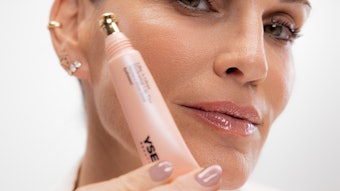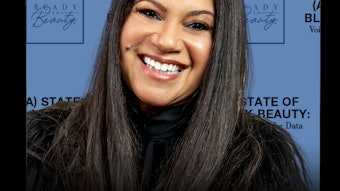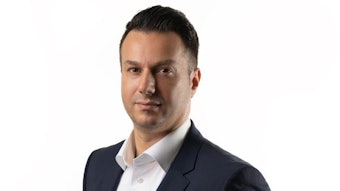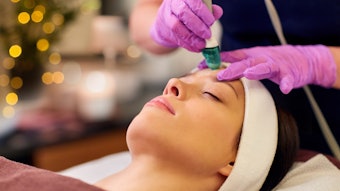Many clichés can be applied to the effect a recession has on the businesses that survive to see the upswing. “Only the strong survive.” “It’s time to roll with the punches.” “When the going gets tough, the tough get going.”
But when you get past the lyrical comfort of such sayings, it becomes clear that many were created for a reason, and actually often do apply. SpaFinder, a leading spa and salon marketing and research company, recently released statistics providing evidence that the spa industry is adapting well to the current economic challenges. The majority of day spas (51%) reported higher revenues in 2008 than in 2007, and 46% of resort and hotel spas enjoyed gains as well. The findings also revealed that 66% of day spas and 76% of resort and hotel spas plan to increase unique promotions and deals, showing that, instead of caving to the recession, spas are evolving for survival.
One of the interesting ways this evolution is taking place is by the adoption of a trend that drastically challenges the basic concept of spa. Two industry leaders—Lydia Sarfati, founder and CEO of Sarkli/Repêchage, a company that supplies seaweed-based skin care treatments and products, and Jane Wurwand, founder of Dermalogica, a professional spa brand—are backing a movement that brings spa treatments out of the treatment room. This movement provides insight into how consumers are adjusting their personal care spending, their evolving outlook on personal care choices and product positioning with the spa channel.
Challenging the Tradition
It has long been accepted that spa treatments belong in private, quiet sanctuaries in order for true relaxation and results to take place, but this concept is beginning to be challenged. “Clients who come through a spa’s doors don’t ever see skin care activity,” proclaims Sarfati, who points out that this practice of hiding services behind locked doors is a formula that spells disaster and lack of sales.
Wurwand agrees, and uses the massage industry as an example. “I liken it to chair massage. When that started becoming popular, it didn’t replace the one-hour massage in a quiet room, but was in addition to it.”
The Concept
Marketed as alternatives for cash-strapped, time-challenged clients who are not spending as much money or time on services to maintain wellness, Dermalogica developed MicroZone, while Repêchage created the Facial Bar Concept. The MicroZone is a 20-minute, results-oriented treatment performed in a salon like open setting that focuses on one skin concern—such as exfoliation, extractions or hydration. “It’s not a mini facial; we pick one priority and focus on it for 20 minutes,” Wurwand explains.
The Facial Bar Concept offers 15–20 minute express treatments and a 30-minute Facial on the Go treatment that allow spa clients to experience deep cleansing and conditioning in a spa’s open, common areas.
“The average spa is seeing a decrease in its services, and regular clients are deciding that they aren’t going to spend $100 on a treatment that they aren’t even sure is doing anything for them,” says Wurwand. “Also, when they decide not to come in for a service, they feel weird about coming in to buy their products, so they purchase them from an anonymous source and not the spa. You have to give consumers permission to come in and buy product to maintain their skin at home.”
The Economic Difference
By bringing services out into the open, spas are creating the opportunity for immediate retail sales and introducing new clients to spa services, as well as opening the door for current clients to book longer, clinical treatments. “Show and tell and you will sell. People will walk in and say ‘What is that lady having done? I want what she’s having’, ” says Sarfati. “The Facial Bar is the appetizer. It increases retail sales and bookings significantly.”
Mark Brado, owner of Jaazz Salon and Skin Care Center, noting this type of treatment allows for a tiered approach to booking appointments and affording clients an opportunity to shop the product offerings. “If a client is coming in and doing our Fabulous 15—a 15-minute skin care service—it costs $20, and they are doing something with their eyes and maybe their T-zone at the skin care bar where they can talk and play with the products. Once they’ve experienced that, then it’s kind of an easy move to go to a $40 facial experience. As people are progressing through our offerings, it gives them variety and it is more systematic.”
The openness of the skin care bar concept also helps to serve a different kind of spa audience; those who are looking for skin care wellness as well as a place to socialize. “Having it out in the open allows for public excitement and lets groups enjoy services together,” says Crowell. “We’ve increased our sales, too. Instead of talking to someone with a box in your hand, we can have them experience it.”
Wurwand believes that offering these services out in the open also will help keep treatment rooms available while opening up a new area of the spa to become revenue-producing. And for spa owners who balk at the idea of bringing services out into the open, Wurwand reminds, “Vidal Sassoon was the first one in the hair industry to have an open floor plan, and everyone else had a cubicle. That was unheard of in the 1960s. I remember people would say, ‘There is no way I will have my hair colored in front of someone else.’ Look at where we are now.”
Evolution is Mandatory
“As long as we keep hanging on to this idea that the relevance of our industry is luxury and pampering and not skin health and wellness, it becomes less and less relevant to our client who is time- and money-pressed. The skin care bar concept provides a unique profit opportunity and lets other clients see what is offered,” explains Wurwand.
In a time period where cliches abound, Greek philosopher Heraclitus of Ephesus’ wisdom holds true: Nothing endures but change. And as the economy bumps along and consumers alter their wellness-based needs and habits in turn, spas provide insight into how to adjust to best serve these changing wants and carve a path for continued success. After all, evolution is mandatory.










